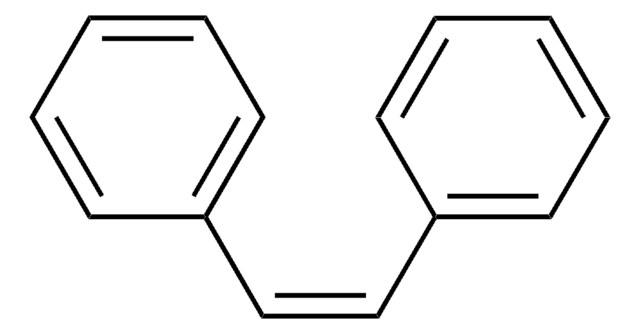Kluczowe dokumenty
380946
Naphtho[2,3-a]pyrene
technical grade
Synonim(y):
Naphtho[2,1,8-qra]naphthacene
About This Item
Polecane produkty
klasa czystości
technical grade
mp
272-273 °C (lit.)
ciąg SMILES
c1ccc2cc3c(cc2c1)cc4ccc5cccc6ccc3c4c56
InChI
1S/C24H14/c1-2-5-18-14-22-20(12-17(18)4-1)13-19-9-8-15-6-3-7-16-10-11-21(22)24(19)23(15)16/h1-14H
Klucz InChI
AXSJLZJXXUBRBS-UHFFFAOYSA-N
Opis ogólny
Zastosowanie
- As test compound for the simultaneous mass spectrometric analysis of nonpolar and polar analytes by heat-assisted laser ablation electrospray ionization (HA-LAESI) method.
- As donor material in the fabrication of organic solar cells (OSCs).
- As blue and green emitting material in the fabrication of organic light-emitting diodes (OLEDs).
- As charge transport channel in the fabrication of organic thin-film transistors (OTFTs).
Hasło ostrzegawcze
Warning
Zwroty wskazujące rodzaj zagrożenia
Zwroty wskazujące środki ostrożności
Klasyfikacja zagrożeń
Acute Tox. 4 Dermal - Acute Tox. 4 Inhalation - Acute Tox. 4 Oral
Kod klasy składowania
11 - Combustible Solids
Klasa zagrożenia wodnego (WGK)
WGK 3
Temperatura zapłonu (°F)
Not applicable
Temperatura zapłonu (°C)
Not applicable
Środki ochrony indywidualnej
dust mask type N95 (US), Eyeshields, Gloves
Wybierz jedną z najnowszych wersji:
Certyfikaty analizy (CoA)
Nie widzisz odpowiedniej wersji?
Jeśli potrzebujesz konkretnej wersji, możesz wyszukać konkretny certyfikat według numeru partii lub serii.
Masz już ten produkt?
Dokumenty związane z niedawno zakupionymi produktami zostały zamieszczone w Bibliotece dokumentów.
Nasz zespół naukowców ma doświadczenie we wszystkich obszarach badań, w tym w naukach przyrodniczych, materiałoznawstwie, syntezie chemicznej, chromatografii, analityce i wielu innych dziedzinach.
Skontaktuj się z zespołem ds. pomocy technicznej







![Benz[b]anthracene 98%](/deepweb/assets/sigmaaldrich/product/structures/197/885/3a015625-5e09-4f15-8b17-4cc285304fc7/640/3a015625-5e09-4f15-8b17-4cc285304fc7.png)
